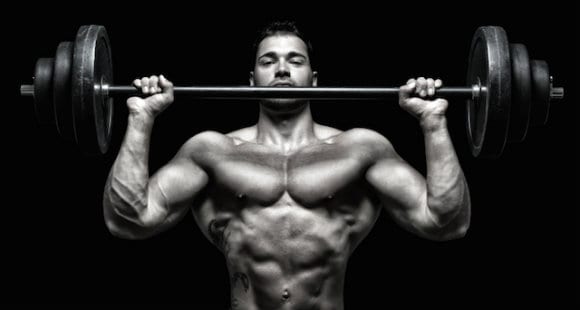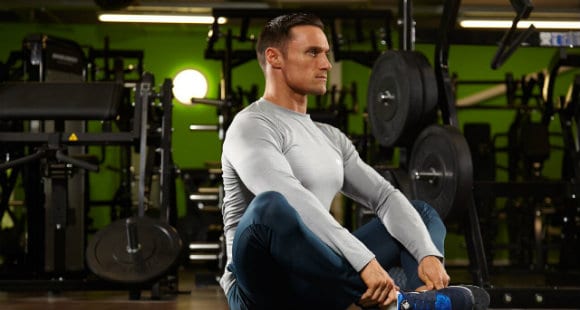By healthiergang writer , graduated in Medicine and Surgery.
Intercostal muscles
The training of the abdominal muscles has always been part of the routine of any athlete, but for some years now the attention has extended to the adjacent area, underlining how the development of the intercostal muscles and the large dentate makes the body aesthetically more harmonious and not only ...
These muscles in fact represent the junction between the pectoral and abdominal muscles and they should be paid attention to in all those athletes who can boast a good development of the abdominal band, procrastinating this attention in beginners, who will benefit most by focusing on the toning of muscles traditionally considered main.
The intercostal muscles are part of the respiratory muscles; divided into inspiratory and expiratory, the activation of the latter is required only in the case in which an increase in pulmonary ventilation is necessary, while they are not called into question in basal conditions and quiet breathing.
Why improve?
Many of you will ask "why improve respiratory fitness?”.
The answer is simple: a respiratory capacity training will allow you to tire less during sports performances.
The increase in the frequency and depth of respiratory acts, in fact, requires a considerable energy expenditure and we also remember that the respiratory muscles, just like all the others, can struggle against each other and this is undoubtedly a limiting factor in sports practice. , especially since this fatigue would seem to activate a reflex, through metabolic and nervous pathways, capable of induce vasoconstriction in the skeletal muscles, reducing the supply of nutrients to them and increasing the perception of fatigue.
An Indiana University study has shown how strengthening these muscles can reduce their demand for oxygen, making it more available for muscles engaged in exercise. Are you sure it's cheap?
During an endurance sport activity, such as running or swimming, performed at maximum intensity, breathing consumes 10-15% of the total oxygen available for the athlete; this explains why improving the performance of intercostal and respiratory muscles in general can be really useful.

How to train them?
But how to train them?
Being respiratory muscles, the intercostals are mostly endowed with red fibers and inducing hypertrophy is far from simple.
Any exercise that stresses the chest or requires forced breathing will do the trick, but also a high intensity aerobic activity, in which the respiratory work is necessarily greater, will be an excellent option.

Then there are a whole series of exercises that are part of the so-called "respiratory gymnastics" and which must be practiced mostly in an upright or supine position, just follow small precautions: in the upright position the torso must be bent slightly forward, hands on the thighs and knees in slight flexion; in the supine position, on the other hand, the arms are extended along the sides, with the palms of the hands up, and the legs must be flexed.

Exercises
But let's quickly review some of these exercises.
Financial year 1
Breathe in through the nose for a long time, as if we were smelling a flower, until you feel your lungs completely full, hold your breath for a couple of seconds and then proceed with a long maximal exhalation from your mouth, keeping your lips parted, as if you wanted to blow on a feather.
When the lungs are well emptied, wait a few minutes and start over.
This same exercise can be done by flexing the head anteriorly and posteriorly, alternating between repetitions, during the exhalation phase. Another variant involves the rotation of the head to the right and to the left (always alternating the side between one repetition and the other).
Exercise 2
Arms at your hips, inhale through the nose until the lungs are full and then exhale through the mouth with parted lips, while bringing your arms stretched outwards, at shoulder height.
A variant can be made by bringing only one arm up during the exhalation phase, but in this case by pushing it up over the head, taking care to alternate the arms between one repetition and the other.
Financial year 3
It starts with the hands behind the neck and the elbows open. Breathe in through your nose and, when your lungs are full, exhale through the half-open mouth closing your elbows forward (always keep your hands behind your neck).
Financial year 4
This time sit in a chair with your hands flat on your thighs. The inspiration is always the same, ceiling and nose. Exhale with parted lips while tilting your torso forward and trying to touch the floor with your hands.
Conclusions
All these exercises will help you to improve the depth of breath and the tone of the respiratory muscles, including the intercostals. Obviously each of these must be repeated several times a day, at least 10 minutes at a time.
Several studies have highlighted how after 6 weeks of well-performed respiratory gymnastics, the sensation of respiratory fatigue during physical exercise is considerably reduced, improving the well-being and autonomy of the athlete.
Seeing is believing!


























